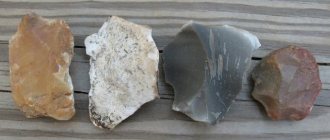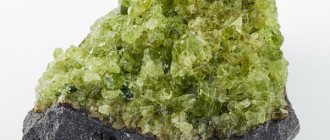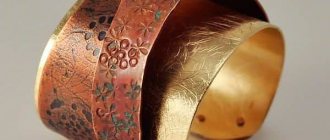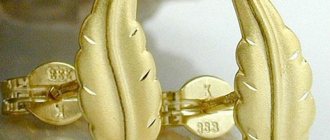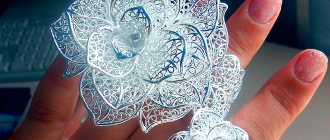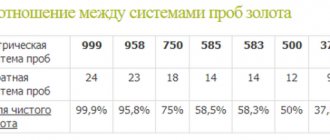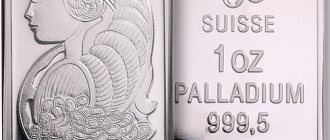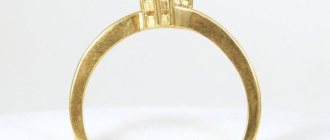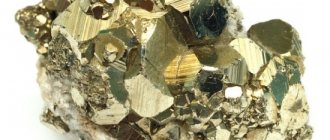Metals and alloys are literally the basis of human civilization. Pure metals are not very often used in the national economy, but alloys are used everywhere. This is not surprising, since the alloy combines the properties of several substances in the best proportion. This article talks about the production and processing of molten brass, preparation of the material, composition, properties and application of the material.
Composition and classification of brasses
The classic composition assumes the presence of copper and zinc in the alloy in a ratio of 2:1, respectively. The Ancient Romans knew such brass. Skeptics will remember that zinc in its pure form was discovered in the 16th century. But in the case of Ancient Rome, we are talking about zinc-containing rock, which at that time was already being processed.
At that time, it was believed that it was the presence of zinc that determined the color, and only later did it become known that the sunny shade of the brass alloy is obtained due to the fact that the presence of zinc dilutes the copper redness.
- Brass is divided into two-component (simple) and multi-component (special).
One of the markings for products made from brass indicates the percentage of components. So the letter L indicates the type of alloy - brass. and the adjacent numerical index indicates the copper content in the composition. For example, “L80” stands for “brass consisting of 80% copper and 20% zinc.”
Two components are not a mandatory requirement. If there are more of them, then each component introduced into the brass composition is displayed in the marking using the corresponding letter symbol following the letter L. Tin, nickel or lead can be used as additives. At the same time, brass changes its properties.
Additives are introduced into the alloy to achieve certain purposes. For example, brass in classical proportions cannot be used in shipbuilding. All thanks to the instability of brass to the effects of saline solutions (sea water). Additives introduced into the alloy solve this problem while maintaining the basic characteristics.
- According to the degree of processing, alloys are divided into: wrought (brass strip, wire, pipe, brass sheet) and cast (fittings, bearings, instrument parts).
Wrought two-component brass
Deformable multi-component brasses
Foundry brasses
This is interesting: Tompak: composition and characteristics of the alloy
Brass composition
In the brass formula, two components will always remain unchanged - copper and zinc. Copper is a natural resource, zinc is mined by recycling waste. In the finished material, the mass of zinc is kept in the range from 5 to 50%.
Copper is number 29 on the periodic table, has high ductility, and has a beautiful yellowish-golden color. When exposed to open air, an oxide film appears on the metal, causing the copper to turn red.
Zinc, number 30 on the periodic table, is a brittle metal and has a light blue color; when an oxide film appears, it darkens.
Copper-zinc alloy is divided into single-phase and two-phase:
- The single-phase alloy contains about 30% zinc. This is a common composition, which is characterized by plasticity and at the same time hardness. If the percentage of zinc increases, the ductility decreases while the hardness of the brass increases. After zinc reaches the 40% mark, the hardness indicator immediately drops. Single-phase brass is a ductile alloy and can be processed both at low and high temperatures, however, at a temperature of 400C a brittle zone appears.
- The two-phase alloy consists of 30−50% zinc and contains impurities of other metals within 10%. This is a technical or special alloy. It does not differ in plasticity; only when heated above 700C does it acquire plastic properties.
How do alloying additives affect
Alloying is an additive to an alloy that changes its composition and, as a result, gives it some new properties, or increases or decreases existing properties.
To reduce the loss of metal from the surface of the melt, aluminum is added to it; the resulting oxide film plays a protective role. To increase strength and improve anti-corrosion properties, magnesium is added to the alloy, separately or together with aluminum and iron. Moreover, additives have practically no effect on the density of the metal. The addition of nickel to the melt eliminates the manifestation of negative aspects in terms of oxidative processes. It is possible to improve the ductility, malleability of the alloy and the conditions for its cutting by introducing an additive such as lead into the brass composition. Silicon in combination with lead improves sliding to such an extent that an alloy alloyed with this additive can be used on equal terms with tin bronze. At the same time, silicon added without other additives specifically increases the hardness and strength of brass. If the metal is planned to be used on a ship, tin is added to it, which makes it resistant to salt water.
Physicochemical characteristics
Brass has a yellow-golden hue, due to which the material is often used in the manufacture of artistic jewelry. The material is characterized by high ductility, corrosion resistance and anti-friction characteristics. Physical properties allow for polishing, forging, gas and arc welding, and plastic deformation of metal.
The melting point depends on the percentage of zinc content: as it increases, the melting point decreases. On average it is 880-940 degrees Celsius. In the open air, the surface of brass oxidizes and darkens, so it is often treated with a special protective varnish.
Products made of brass differ in their chemical properties from objects made of other metals. Resistance to oxidation and corrosion is much higher than that of copper, but the latter has better electrical and thermal conductivity. Brass alloys are easier to process, but they are inferior in strength to, for example, bronze products.
Properties and characteristics
The properties of brass are determined by its composition, both chemical and phase. Therefore, it is quite difficult to talk about general technical properties. Each alloy has its own characteristics.
The average data looks like this:
- average density – 8300–8700 kg/cubic. m;
- specific heat capacity at normal temperature - 0.377 kJ kg−1 K−1 resistivity - (0.07-0.08) 10−6 Ohm m;
- thermal conductivity – 0.26–0.592 cal/cm sec, °C, the higher the proportion of copper, the higher the thermal conductivity;
- The melting point is determined by the chemical composition and varies from 880–950 C. An increase in the proportion of zinc reduces the temperature;
- the material can be welded, but not by fusion welding, but, for example, by contact welding.
- Alloys of any composition are well polished.
The introduction of alloying additives significantly affects the physical characteristics. The data given relate specifically to two-component brasses.
We will talk about the production of parts from brass and copper in bulk and to order, as well as the production of other products from it below.
Melting brass in an induction furnace without a graphite crucible is presented in the video below:
Effect of impurities on properties
Impurities are not the main alloying elements of simple brasses, but they affect the properties of the alloys. It is almost impossible to obtain an alloy without impurity atoms, since foreign elements are contained in the raw materials for the production of copper and zinc. Ultrapure metals have a high cost and their use is highly specialized and not justified for mass production. The amount of impurities is controlled by standards, which guarantees the mechanical and technological properties of grade copper alloys.
Low-melting impurities, which have limited dissolution in copper-zinc alloys, negatively affect the properties of brass. Low-melting inclusions in the brass composition are released along the grain boundaries and worsen the plastic properties during hot deformation. Single-phase α-brasses are most sensitive to such impurities.
Impurities that do not form independent phases do not negatively affect the mechanical and technological properties of brass.
- Aluminum is completely in solid solution and, as an impurity, does not deteriorate the properties of brass. Small additions of aluminum during melting form a protective film of aluminum oxide on the surface of the melt. This prevents the evaporation and loss of zinc.
- Nickel and manganese in low concentrations enter the solid solution and have little effect on the physical, mechanical and technological properties of brass. Nickel raises the recrystallization temperature of brasses.
- Iron at room temperature has low solubility in the copper-zinc solid solution and forms an independent γFe phase in brasses. This ferromagnetic phase significantly changes the magnetic properties of brasses. The iron concentration in antimagnetic brass does not exceed 0.03%. Iron improves the strength and technological qualities of alloys, since it makes recrystallization difficult and refines the grain.
- Silicon is an impurity that enters a solid solution. Silicon improves soldering and welding of brass and increases resistance to corrosion cracking.
- Bismuth requires special control; it does not dissolve in brass alloys in the solid state and creates a low-melting eutectic at the grain boundaries, which consists of pure bismuth. Bismuth provokes the hot brittleness of brasses, having a stronger effect on single-phase ones. Its concentration in brasses is limited to 0.002–0.003%
- Lead is slightly soluble in copper-zinc alloys in the solid state and, upon solidification, is released in elemental form at the grain boundaries in the form of small spherical particles. Lead impurities impair the ductility of α-brasses at elevated temperatures. Lead provokes hot brittleness, especially in single-phase brasses, so the lead content in double α-alloys does not exceed 0.03%. Additions of lead to brass improve machinability.
- Antimony is a harmful impurity in copper-zinc alloys. It impairs technological ductility during hot and cold forming. Antimony concentrations of up to 0.1% in two-phase brasses prevent dezincification.
- Arsenic dissolves in solid copper up to 5% by weight at a temperature of 25°C, but in a copper-zinc solid solution its solubility is no more than 0.1%. The brittle intermediate phase As2Zn is formed at an arsenic concentration of more than 0.5%. This phase is released in the form of interlayers at the grain boundaries, which leads to brittleness of brass. Arsenic in small quantities of 0.025-0.06% with microadditives protects brass from corrosion cracking and dezincification in sea water.
- Phosphorus is slightly soluble in copper-zinc alloys during solidification. In a solid solution, phosphorus forms an intermediate phase, which increases the hardness and greatly reduces the plastic properties of brass. Small amounts of phosphorus increase the mechanical properties of brasses and reduce the grain diameter of castings. The rate of grain growth in deformed brasses is increased by phosphorus during recrystallization annealing. Copper-zinc alloys do not require deoxidation with phosphorus, since zinc is a stronger deoxidizer than phosphorus. In industrial grades of brass, the phosphorus content does not exceed 0.005-0.01%
Applications of brass
Worldwide consumption of zinc for the production of this alloy is estimated at two million tons, with half of this amount represented by scrap zinc products. Brass for technical purposes is obtained by alloying approximately equal amounts of copper and zinc. All brass products can be divided into three main types, which determine the areas of their application:
- deformable - contain less than ten percent zinc, their second name is tompak, it has good ductility, is not subject to corrosion and glides well on metal. It has excellent weldability with steel and an excellent color shade - like gold;
- foundry - their name indicates the main direction of application, the production of objects by casting, they consist of 50-80% copper. The alloy is resistant to corrosion, does not deform when rubbing against other metals, is very durable and non-fragile. When melted, it is easy to pour into molds of any configuration;
- automatic - these are alloys with a lead additive, this combination makes it possible for discrete chips to escape from under the cutter, which is very important when processing products in an automated position - the wear of machine parts is reduced and the processing speed increases.
One of the most popular metals around the world is brass. The use of this alloy affects almost all sectors of the national economy. Simple alloys with the addition of zinc within 20% are used for the manufacture of machine parts and mechanisms, heat exchangers.
Alloys containing up to 40% zinc are used to items, and if such alloys are alloyed with additives, they are used in shipbuilding and mechanical engineering, aircraft manufacturing and construction, in the watch industry, etc. Tombak is used to make artistic objects, various costume jewelry, and others attributes, including military insignia.
Casting brass is a material for the manufacture of parts operating in aggressive environments. Machine hardware is used to make hardware - screws, including self-tapping screws, nuts and bolts and studs. The alloy is non-magnetic, it is used where this property is in demand, for example, for the manufacture of compass parts. Its increased heat capacity determines its use in heating appliances; samovars have long been made of brass. Church utensils are another area of application for this golden alloy.
In jewelry, brass is valued no less than the precious metals that it imitates in the manufacture of jewelry and costume jewelry. Experts divide brass products into three groups:
- with medium zinc content, yellow;
- golden color, with a small amount of zinc;
- green in color, with a large amount of zinc in the alloy.
Brass has the closest color to gold when it contains fifteen percent zinc and an aluminum additive of 5%. Often, dishonest people take advantage of this property by counterfeiting gold jewelry, although the densities of gold and fakes are not comparable. Clean brass products with oxalic acid.
Brass marking
Brand
All two-component brasses are highly pressure-treatable. They are supplied in the form of pipes and tubes of various cross-sectional shapes, sheets, strips, tape, wire and rods of various profiles. Brass products with high internal stress (for example, cold-worked) are susceptible to cracking. When stored in air for a long time, longitudinal and transverse cracks form on them. To avoid this, before long-term storage it is necessary to relieve internal stress by performing low-temperature annealing at 200-300 C.
Read also: Photo relay fr 601 video connection
The number of grades of multi-component brass is greater than that of two-component brass.
The grade of these brasses is as follows:
– the letter L is placed first, as in simple brass;
- followed by a series of letters indicating which alloying elements, except zinc, are included in this brass;
– then, separated by hyphens, numbers follow, the first of which characterizes the average copper content in percentage, and the subsequent ones - each of the alloying elements in the same sequence as in the letter part of the brand.
The order of letters and numbers is determined by the content of the corresponding element: first comes the element that has more, and then descending. The zinc content is determined by the difference from 100%.
For example: the brand LAZHMts66-6-3-2 stands for: brass, which contains 66% Cu, 6% Al, 3% Fe and 2% Mn. It contains 100-(66+6+3+2)=23% zinc.
The main alloying elements in multicomponent brasses are aluminum, iron, manganese, lead, silicon, and nickel. They have different effects on the properties of brass:
Manganese
increases strength and corrosion resistance, especially in combination with aluminum, tin and iron.
Tin
increases strength and greatly improves corrosion resistance in seawater. Brasses containing tin are often called marine brasses.
Nickel
increases strength and corrosion resistance in various environments.
Lead
worsens mechanical properties, but improves machinability. They are alloyed (1-2%) with brass, which is machined on automatic machines. That's why these brasses are called automatic.
Silicon
impairs hardness and strength. When combined with silicon and lead, the antifriction properties of brass are increased and it can serve as a substitute for more expensive ones, such as tin bronzes, used in plain bearings.
Application of special brasses:
LAZ60-1-1 –
Pipes, rods
LZhMts59-1-1 –
Strips, rods, pipes, wire
LTs40S –
Fittings, bushings, separators for ball and roller bearings, etc.
LTs40Mts3Zh –
Complicated configurations of parts, fittings, propellers and their blades, etc.
Brass is the oldest alloy, as its production dates back to the times of the Roman Empire. At that time, it was the first metal in value after silver and gold. Thanks to its composition, it has an attractive appearance and at the same time high strength. Copper gives a golden-yellowish color that is pleasant to the eye, and the addition of zinc and other components makes it a strong material.
Brass production, types and properties
Brass is produced at high temperatures in special clay containers.
When making the alloy, it is necessary to take into account that part of the zinc evaporates. The alloy is divided into several types:
- Tompak is an alloy containing no more than 13% zinc. Tompak is characterized by increased elasticity, high resistance to rust and abrasion. This type of brass is used when welded with stainless steel to obtain a valuable alloy, from which medals, fittings, costume jewelry, art items and tools are subsequently made.
- Semi-tompak is an alloy in which zinc varies between 10-20%. The scope of application of semi-tompak is similar to tombac, but it is a less valuable alloy.
- Cast brass is an alloy containing 50-80% copper, as well as admixtures of other metals. Due to its flowing properties, it is used in the manufacture of semi-finished products and shaped products by casting. It has low rates of material degradation, is resistant to friction and rust and also has excellent mechanical properties. Cast brass is used in the production of bushings, fittings, nuts, bearings and other rust-resistant fittings.
- Automatic brass is an alloy containing lead in a percentage not exceeding 0.8%. Lead allows you to increase the processing speed of products due to the formation of short chips. It is produced in the form of sheets, strips and rods; later they are used to turn watch mechanism parts, hardware and nuts.
Quite often, brass is confused with bronze, and many even believe that they are the same material - this is completely wrong. You can distinguish these two metals at home; to do this, you need to go through the following algorithm of actions:
- It is good to clean both materials and examine them in sunlight. The color of bronze will fade to red, and brass to yellow, sometimes even white.
- By placing the product in a container of water, you can analyze it for density. The molar mass of brass is in the range of 8350−8750 kg/m3; if the mass is higher, then it is bronze.
This is interesting: How to distinguish bronze from brass: composition, characteristics, features
Properties of brass
Brass alloys lend themselves well to pressure processing. The mechanical properties are quite high, but the corrosion resistance is satisfactory. If we compare the distinctive features of brass with bronze, then its anti-friction properties, corrosion resistance and strength are lower. The alloys are not very stable in salt water, air, solutions of most organic acids and carbon dioxide solutions.
Brass, unlike copper, has better corrosion resistance . But as the temperature increases, the corrosion rate also increases. Moreover, such a process is noticeable in products with thin walls. Corrosion can be caused by: high humidity, traces of sulfur dioxide and ammonia in the air. To prevent this phenomenon, products made from this composition are subjected to low-temperature firing after processing.
Almost all alloys
when the temperature decreases and remain elastic, which allows them to be used as an excellent structural material. Due to the higher recrystallization temperature, in contrast to copper, at elevated temperatures the creep of brass is lower. At a temperature of 300-600 C, the property of brittleness appears due to the fact that additions insoluble at low temperatures (for example: bismuth, lead) create fragile layers between the crystals. As temperature increases, impact strength decreases. Unlike copper, the thermal and electrical conductivity properties of brass are worse.
Composition of brass in percentage
The main components - zinc and copper - are used in ratios of 30% and 70%, respectively.
More than 50% of the zinc used in brass comes from recycled waste. Technical brass alloys are made of 47–50% zinc. According to their composition, alpha and beta brass are distinguished:
- Two-phase compositions consist of 48–50% zinc and contain less than 5% lead.
- Single-phase alpha compounds have about 30% zinc.
Additives in alloys
Alloying elements are used in brasses. These are substances introduced into the alloy in order to change the structure, and as a result, the characteristics. These elements include:
- Aluminum. The presence of aluminum in the alloy reduces the volatility index. As a result of interaction with oxygen, a layer of aluminum oxide is formed on the surface of the product, which eliminates the volatility of the material.
- Magnesium. This additive is most often introduced in combination with iron and aluminum. Thus, the structure changes, and the alloy becomes stronger, wear-resistant, and corrosion-resistant.
- Nickel. This type of additive is introduced to neutralize the effects of oxidative processes.
- Lead. The presence of this alloying element provides plasticity to the material. It becomes more malleable, easier to mechanically influence, including cutting. Used for products that do not have a load-bearing function during operation.
- Silicon. The additive is introduced to increase the strength of the metal and its rigidity. If lead is added in parallel, the anti-friction properties will improve. Again, alloys of copper, zinc, silicon with lead and bronze with tin are becoming competing. The cost of the latter is higher.
- Tin. This metal is added to eliminate the risk of corrosion pockets. This is especially important in shipbuilding. With the addition of tin, salt water is not harmful to the metal.
Chemical composition and features of the internal structure
The main constituent elements are considered to be zinc and copper, the concentration of which will be the highest. The composition of brass may also include other impurities that give the alloy special physical properties. The main component of brass is characterized by high ductility and good machinability. Therefore, these properties are transferred to the metal in question.
The chemical composition of brass is regulated at the time of production, as is the type of structure. There are two types of structure:
- Alpha phase is a solution that has increased stability. Considering the crystal lattice, it should be noted that it has a face-centered cubic shape. This type of structure occurs extremely often.
- The alpha + beta phase is another stable solution, which can be characterized by a ratio of copper to zinc of 3 to 2. Due to this, a unit cell is obtained.
It is worth considering that the hardness of the second alloy is much higher than the first. However, due to a significant increase in hardness, ductility decreases significantly. The maximum zinc content in brass is 50%. If the production technology is followed, such a concentration of zinc allows one to achieve high levels of strength and ductility.
When producing this material, we take into account how the heating temperature affects the ongoing structural transformations:
- If the alloy is heated to high temperatures, then the atoms of the β-phase begin to be arranged in no particular order. In this state, the composition has increased plasticity.
- If heating is carried out to a temperature of 460 degrees Celsius, then a phase is formed in the composition, which is called β'. A feature of this phase is increased hardness and brittleness. These qualities are due to the fact that the atoms are arranged in a strict order.
Complex brasses may contain iron, manganese, lead and other components that are designed to change physical properties. For example, lead makes the alloy easier to machine.
The inclusion of lead and bismuth in the composition causes a decrease in the ability of the alloy to deform in a hot state. However, lead in a small concentration makes it possible to obtain loose chips, which makes it easier to remove them from the cutting zone during turning or milling.
Marking order
To mark the alloy in question, certain rules were adopted to indicate the concentration of the main substances. All brands of brass begin with the designation “L”, which may be followed by the letters of the chemical substances included in the composition.
A wrought brass alloy or another variety of it has a number after the first letter characterizing the percentage of copper. In addition, the marking may indicate the concentration of alloying elements, for which the “L” sign comes with other letter designations.
To indicate the concentration of alloying elements, a dash is placed after the main number, then the percentage of the following elements is indicated. A dash is also used to separate digital symbols. The concentration of the second main element (zinc) is calculated by subtracting other indicators of the concentration of copper and alloying elements from 100% of the value. An example of how brass is designated according to established standards is the marking LAZH70-1-2. It should be read as follows:
- The alloy contains 70% copper.
- The alloying elements are aluminum and iron, the concentration of which is 1% and 2%, respectively.
- Zinc concentration: 100 – 70 – 1 – 2 = 27%.
In some cases, the concentration of zinc is indicated by the corresponding letter, and the amount of copper is calculated. A similar marking method is more often used to mark foundry brass.
Types of brass
Brass can be simple or special:
- Simple - it contains only two components, copper and zinc. Marked with the letter “L” and numbers. The numbers in the marking indicate the percentage of copper to the total mass of the alloy. Based on this, it is clear that the alloy marked “L68” contains 68% copper and 32% zinc.
- Special - consists not only of copper and zinc, but other metals are added to it, which change the properties of the alloy depending on their characteristics. The marking of this material carries information about the percentage of copper to zinc and other elements called alloying elements. For example, the marking “LA70−3” indicates that the composition used 70% copper, 3% aluminum and 27% zinc. In special brass, additional metals can be:
- Tin.
- Lead.
- Iron.
- Manganese.
- Nickel.
- Silicon.
- Aluminum.
Brass manufacturing technology
To obtain a brass alloy, you need to follow a number of steps:
- Place the copper raw material in a clay bowl, after weighing it.
- Place the bowl in a special oven.
- Lump zinc and the necessary additives are added to the molten copper.
- The resulting alloy is melted until the composition is homogeneous.
Liquid hot brass is poured into molds. Furnaces for the production of alloys usually operate on solid fuel - coal.
A problem with melted brass alloys is zinc evaporation. Therefore, smelting plants are equipped with absorbent systems to capture it, after which it is reintroduced into the brass alloy. The next feature of the alloy manufacturing technology is the need for re-melting. During primary brass shrinks, and deflections form in the products.
The temperature required for melting brass cannot be lower than +800
0
C. The exact indicator is calculated for each brand of brass separately. The amount of zinc in alloys is inversely related to the melting point of brass. That's all the technology is.
Application of brass
This copper-zinc material is malleable and tough; thanks to these qualities, it is actively used in forging, mechanical engineering and other fields. Under the blows of an anvil or hammer, brass takes any shape. Depending on the scope of application of brass, the composition of the alloy as a percentage varies in accordance with the following markings:
- L80, L85, L90, L96 - instrument elements, chemical and thermal mechanisms, coils, etc.
- L68 - stamped parts.
- L70 - quill for the chemical industry.
- L60 - thick-walled fittings, machine springs and nuts.
- L63 - elements for the automotive industry, condenser tubes.
- LAZH60−1−1 - spare parts for sea vessels.
- LA77−2 - capacitor devices for sea vessels.
- LAN59−3−2 - elements of chemical equipment, sea vessels and electrical machines.
- LN65−5 - condenser and manometric pipes.
- LZhMa59−1−1 - spare parts for aircraft and marine vessels, bearing shells.
- LMts58−2 - hardware, nuts, fittings.
- LO90−1, LO62−1, LO70−1, LO06−1 - condenser pipes for heating equipment.
- LMtsA57−1−1 - elements and spare parts for river and sea vessels.
- LS74−3, LS63−3 - bushings and clock mechanisms.
- LK80−3 - corrosion-resistant products.
- LANKMts75−2−2.5−0.5−0.5 - springs and pressure tubes.
- LMsh68−0.05 - capacitor collectors.
Brass remains the most sought after and popular alloy, whatever its composition. If the production technology is followed, it will not rust, blacken or oxidize.
Differences between the most popular brass alloys
Let us reveal the features of the most famous and sought-after alloys:
- L63 (copper 62-65%, zinc 35-38%). One of the most common types of brass, it can be polished, drawn, rolled, embossed, and bent. Used for the production of refrigeration equipment, rivets and household decor.
- LS59-1 (copper 57-60%, zinc 37-42%, lead 1%). Processed by pressure and cutting on lathes and milling machines. Lead alloying provides additional resistance to cracking. Used for the manufacture of fastening fittings, gears, bushings, gears, bearings, pipes and rods.
- L90 (copper 88-91%, zinc 9-12%). Also called tombac, it has a golden color. Can be enameled, forged, embossed. It has increased ductility, does not rust and tolerates welding with steel well, designed for the production of semi-finished products and wire for electrical engineering.
- L68 (copper 67-70%, zinc 30-33%). It is subject to pressure and has good ability to be cold deformed, soldered and welded. Not only fasteners and rolled products are made from this material, but even equipment and ammunition.
Physical properties
Physical properties largely depend on the chemical composition of a particular type of alloy. Therefore, the properties of brass may vary significantly.
As previously noted, tombak has become widespread, which can be used for the production of various parts and even jewelry.
The color of this type of brass can be yellow or red depending on the concentration of zinc. The main properties of such brass include the following points:
- High degree of plasticity. The plasticity of deformable brass allows it to be used as a workpiece in various production processes: it is suitable for processing by both stamping and turning.
- High corrosion resistance means that even with prolonged use at high humidity, rust does not appear on the surface.
- Good anti-friction properties.
- Weldability with steel and other materials allows the alloy to be used to produce combined materials.
- It is possible to coat the surface of the tombak with various compositions to impart special performance qualities. An example is that quite often tombac is coated with enamel or varnish to decorate it.
- Initially, the alloy has a beautiful golden color. For this reason, it is often used in the production of artistic products.
The mechanical properties of wrought brass can change significantly due to the addition of various alloying elements.
In mechanical engineering and other areas of production, the foundry variety of brass has become widespread. Its density is relatively low (about 8300 kg/m
3
), however, other physical properties determined the widespread use of cast brass:
- Resistance to corrosion.
- High mechanical characteristics.
- Good malleability.
- A high fluidity rate when the alloy is heated, which makes it possible to obtain products of complex configurations.
- Increased resistance to composition breakdown due to environmental influences.
- Melting of the composition takes place at a temperature of about 950 degrees Celsius.
Yellow brass
The strength of brass is lower than that of steel, which is due to the structural features of the crystal lattice and composition. The influence of zinc concentration on the properties of brass is very great. Therefore, to impart special properties, the concentration of the main elements can vary significantly.
Let's look at how alloying elements affect the properties of brass.
- Tin significantly increases the anti-corrosion properties in sea water and increases the strength of the alloy. Brass with tin is often called marine brass.
- Manganese increases strength and corrosion resistance. Manganese brasses are often combined with tin, iron and aluminum.
- Nickel improves corrosion properties and strength in various environments.
- Silicon reduces strength and hardness and also improves weldability. Brasses containing silicon and lead have good anti-friction properties. Such alloys can replace more expensive ones, such as tin bronze.
- Lead significantly improves machinability, but at the same time degrades mechanical properties. Lead brass is called automatic, since it is processed on automatic machines. This alloy is the most common.
- Aluminum reduces the volatility of zinc due to the formation of a protective film (aluminum oxide) on the surface of molten brass.
Production methods
A copper alloy such as brass lends itself well to various processing methods. Thus, various products can be produced from this alloy using forging, stamping and drawing methods, and due to its relatively low melting point and good fluidity in the molten state, it is actively used in foundries.
Pouring molten brass into molds
Brass, the main alloying element in which is zinc, is obtained by melting:
- in crucibles made of refractory material (for heating, crucibles together with alloy components are placed in shaft or flame furnaces);
- in reverberatory furnaces (when using this method, smelting is performed without the use of crucibles).
When smelting a brass alloy, one should take into account the fact that zinc will actively evaporate during this procedure, so the amount of this metal should be calculated with some margin.
» data-lazy-type=»iframe» src=»data:image/gif;base64,R0lGODlhAQABAIAAAAAAAP///yH5BAEAAAAALAAAAAABAAEAAAIBRAA7″>
Brass alloy production technology
Since the main part of brass is copper, the composition is attributed to copper alloys. The manufacturing method is quite simple. But the technological process itself is complex and labor-intensive, requiring special processing of raw materials and compliance with high temperature conditions.
In the production of brass, technologies from the copper and zinc industries are used. Different types of melting furnaces are adapted for smelting. More often, factories use electrical induction equipment with a magnetic core. An obligatory element is a hood, since when heated, elements dangerous to humans are produced.
Alloy production scheme:
- Melting copper in special crucibles;
- Addition of zinc;
- Introduction of minor components;
- Pouring into molds to produce foundry brass;
- Hardening by stamping or drawing methods.
